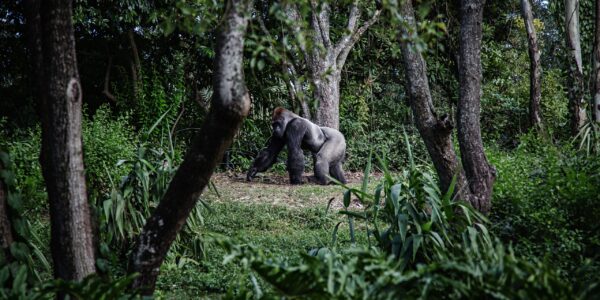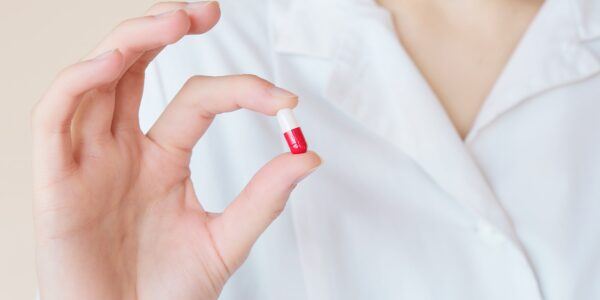Dandruff is a common condition affecting up to half the world’s population. However, not many people know about how the microbiome affects dandruff. Dr. Savanne Holster, Product Manager Skin Health, and Dr. Radhika Bongoni, Head of Business Development at BaseClear discussed the role of the scalp microbiome in controlling dandruff with Dr. Christin Koch, Head of Microbiology in the Global Innovation Cosmetic Ingredients division of Symrise AG.
Dandruff is surprisingly common: around 50% of adults are affected worldwide, and incidence appears to be growing (Borda, 2015). Dandruff normally first appears in adolescence, tends to increase in prevalence for people in their 20s and starts to decline in people aged over 50. Over the past decades, a complex role for the microbes living on the scalp in causing or preventing dandruff has been identified. Genomic technologies targeted at investigating the scalp microbiome have helped us to develop advanced treatments.
What is dandruff?
Dandruff is a type of skin condition involving scaly patches that develop on the scalp. As the scales detach from the scalp, they remain visible in the hair as white or yellowish flakes. The flaky skin is inflamed and may itch. While it is mainly a cosmetic problem, it can be uncomfortable for people to have dandruff and can lead to a loss of self-esteem. There are many shampoos available to help lessen the symptoms.
There is no clear cause for dandruff, since it may occur due to several factors that increase susceptibility. The following factors favour dandruff formation:
- Amount of certain microbes that reside on the scalp
- Excessive production of oils (sebum) in the scalp
- Disturbed outermost layer of skin (epidermis)
- Genetic disposition
- Negative well-being factors such as psychological stress, nutritional status and weak immune system
The reason why dandruff normally first occurs during puberty is due to the increase in sebum production in the scalp at this age. While sebum on the one hand is food for Malassezia, higher sebum production does not necessarily cause dandruff. Epidermal health can also be negatively affected by pollution, exposure to harsh materials or UV rays from sunlight. Even genetics plays an important role: a common gene associated with dandruff formation is the Y-chromosome, as men are more likely to be affected. Other genetic causes include how the individual immune system reacts to irritation on the skin, as some people are more prone to cutaneous overreactions. The specific microbiome composition has also been identified as a factor for dandruff. Radhika Bongoni notes that looking into these factors is a future area of research. “Skin barrier function, the scalp microbiome and host immune function interact to increase the chance of dandruff. This would be an interesting new area to direct research efforts.”
How dandruff is linked to the scalp microbiome
There is a complex relationship between dandruff and microbes commonly found on the scalp. The three most common microbes associated with dandruff are the yeast Malassezia, and the bacterial genera Cutibacterium (recently changed names from Propionibacterium) and Staphylococcus (Saunders, 2012). It’s therefore important to look at the entire microbiome to identify how fungi, bacteria and other microorganisms interact. Koch notes that current understanding lacks a functional model of how these microorganisms act together to cause or prevent dandruff. “To understand the whole picture, we need genomic techniques such as shotgun sequencing of the different microbial kingdoms” she reports. Savanne Holster explains how specific technologies may be able to help. “The qPCR approach reports the absolute abundance of microbial strains analysed. This helps to track the abundance of specific strains within the scalp microbiome. And the entire microbiome can be profiled using 16S and/or ITS amplicon analysis.”
The fungus Malassezia is most commonly associated with dandruff. This yeast loves living on the scalp because it requires fatty acids, found in abundance in scalp secretions. Malassezia produces lipases to break down scalp fatty acids, which can irritate the scalp. People with higher numbers of Malassezia on their scalp have a higher incidence of dandruff. Different species of Malassezia appear to alter dandruff incidence. While M. furfur has been associated with dandruff in the past, we today know that the prevalence of M. restricta is related to the development and severity of dandruff. 
Malassezia phylogeny, impact on human skin, and mating type (MAT) locus.
(A) An ITS sequence-based phylogenetic tree of 14 Malassezia species inferred using neighbour joining method and a 500 replicate bootstrap analysis. Closely related Ustilago maydis and Cryptococcus neoformans were used as outgroups. (B) Malassezia-associated dandruff photograph (C) M. globosa MAT locus, comprising the bW- and bE-encoded transcription factors (the b locus) and genes for a pheromone and pheromone receptor (the a locus). [Source: https://www.ncbi.nlm.nih.gov/pmc/articles/PMC3380954/]
The two bacteria Cutibacterium and Staphylococcus have opposing associations with dandruff. Namely, a higher proportion of Cutibacterium compared to Staphylococcus is related to a scalp that is free of dandruff. The scalp microbiome is a complex environment, and it’s likely that other microbes could affect dandruff incidence.
Two types of Dandruff: Dry and oil
What many people don’t know is that there are two types of dandruff. The type of dandruff proscribes the best treatment to use, so it’s important to be able to distinguish between them. A dry scalp and white flakes that fall out of the hair like snow characterise dry dandruff. Oily dandruff in contrast has larger, oily yellow flakes that clump together. Excess sebum from the scalp causes the flakes to clump together and stick to the hair.
To treat dry dandruff, the best course of action is to treat the scalp to help the skin to heal. Use a mild, moisturising shampoo that will restore the scalp’s natural moisture balance. Oily dandruff can be treated with classical anti-dandruff shampoos that contain a fungicide to reduce the amount of Malassezia on the scalp. Innovative molecules for dandruff treatment have just been introduced to the market.
Challenges in sampling the scalp microbiome
Measuring the microbiome is important for research into better dandruff treatments, but sampling skin and scalp microbiome can prove rather difficult. The scalp is relatively dry, which means that it cannot support as many microorganisms as, for example, the colon. The low biomass levels on the scalp provide only a small amount of material with which to conduct analyses.
Several techniques are available for sampling the scalp microbiome. Swabbing is perhaps the most common, and it is performed via a swab that has been prewetted in a physiological salt solution. This method can be difficult to standardise because the number of strokes and the pressure used for the swab affect how many microbes are removed. Taping or scraping methods used for the skin on other areas of the body will pick up a greater amount of bacteria, but are less practical when used on the scalp as most people have hair on their heads that interferes with these sampling methods. Punch biopsies can also be used to sample the upper layers of skin, however they are invasive and cannot be implemented on a large scale. For dandruff studies, important microbes such as Malassezia are located primarily in the outermost layer of skin making invasive techniques less useful. “At BaseClear, we have experience in scalp microbiome analyses. We can advise on the best sampling methods, storage and logistics for clinical studies to get the most reliable results possible” says Holster.
Dandruff treatment now and in future
Current dandruff technologies focus on two different modes of action. Most shampoos contain a fungicidal agent such as zinc pyrithione, azole fungicides such as ketoconazole and climbazole, or piroctone-olamine. Even selenium sulphide is used in some cases. These shampoos reduce numbers of Malassezia on the scalp, thereby helping the scalp mycobiome to return to a healthier balance. Other technologies work by reducing skin irritation and inflammation, or by improving how the skin sheds the outermost layer of skin, such is found in shampoos containing salicylic acid or coal tar.
An innovative dandruff shampoo ingredient recently brought onto the market uses Malassezia’s requirement for fatty acids to control its growth. The compound is called propanediol caprylate. After coming in contact with the lipases released by Malassezia, propanediol caprylate breaks down to form propanediol and caprylic acid. Propanediol is a moisturising compound that helps the skin to maintain its barrier function, and caprylic acid is a fungicide. The unique feature of this ingredient is that it is activated by Malassezia’s own lipases, and works both to support healthy skin and control Malassezia numbers on the scalp. This product was developed based on work with pure cultures of Malassezia and scalp microbiome knowledge.
Future anti-dandruff products are likely to follow a strategy that targets a single group of microbes. “Customers are interested in the scalp microbiome and microbiome-friendly ingredients. They don’t want to kill all the microbes on their scalp, but rather positively modulate the microbiome to find a healthy balance,” says Koch. Bongoni concurs “There is a clear shift away from anti-fungal and towards a more holistic probiotic approach to dandruff treatment.” Other strategies could include improving the immune response to dandruff, or even nutritional regimens that alter the fatty acid composition of sebum or the amount of sebum produced. Koch notes: “there is still a lot to discover.”
References and further reading
- Borda LJ, Wikramanayake TC. Seborrheic Dermatitis and Dandruff: A Comprehensive Review. J Clin Investig Dermatol. 2015;3(2):10.13188/2373-1044.1000019. https://pubmed.ncbi.nlm.nih.gov/27148560/
- Genrich F, Koch C, Lange S, Bugdahn N, Schmaus G. Next Generation Dandruff Control. SOFW Journal 2020.12 (146) 8-13. https://www.sofw.com/en/shop/sofw-journal-shop/product/1253-sofw-journal-12-2020-english-print
- Grimshaw SG, Smith AM, Arnold DS, Xu E, Hoptroff M, Murphy B. The diversity and abundance of fungi and bacteria on the healthy and dandruff affected human scalp. PLoS One. 2019 Dec 18;14(12):e0225796. doi: 10.1371/journal.pone.0225796. https://journals.plos.org/plosone/article?id=10.1371/journal.pone.0225796
- Koch C, Pesaro M, Schmaus G, Mayser P. Medium-chain fatty acid esters-Optimising their efficacy as anti-Malassezia agents. Mycoses. 2020 Jul;63(7):704-710. doi: 10.1111/myc.13093. Epub 2020 May 20. https://pubmed.ncbi.nlm.nih.gov/32306427/
- Ogai K, Nagase S, Mukai K, et al. A Comparison of Techniques for Collecting Skin Microbiome Samples: Swabbing Versus Tape-Stripping. Front Microbiol. 2018;9:2362. Published 2018 Oct 2. doi:10.3389/fmicb.2018.02362. https://pubmed.ncbi.nlm.nih.gov/30333815
- Saxena R, Mittal P, Clavaud C, Dhakan DB, Hegde P, Veeranagaiah MM, Saha S, Souverain L, Roy N, Breton L, et al. Comparison of Healthy and Dandruff Scalp Microbiome Reveals the Role of Commensals in Scalp Health. Frontiers in Cellular and Infection Microbiology 2018;8(346). doi: 10.3389/fcimb.2018.00346. https://www.frontiersin.org/articles/10.3389/fcimb.2018.00346/full
- Saunders CW, Scheynius A, Heitman J. Malassezia fungi are specialized to live on skin and associated with dandruff, eczema, and other skin diseases. PLoS Pathog. 2012;8(6):e1002701. doi:10.1371/journal.ppat.1002701 https://www.ncbi.nlm.nih.gov/pmc/articles/PMC3380954/
- Yoon JS, Shim J, Lim JM, Park SG. Biophysical characteristics of dandruff-affected scalp categorized on the basis of sebum levels. J Cosmet Dermatol. 2020 Aug 5. doi: 10.1111/jocd.13626. Epub ahead of print. PMID: 32757243 https://europepmc.org/article/med/32757243
Related items





